Radiant heating systems supply heat directly to the floor or to panels in the wall or ceiling of a house. The systems depend largely on radiant heat transfer — the delivery of heat directly from the hot surface to the people and objects in the room via infrared radiation. Radiant heating is the effect you feel from the warmth of a hot stovetop element from across the room. When radiant heating is located in the floor, it is often called radiant floor heating or simply floor heating.
Radiant heating has a number of advantages. It is more efficient than baseboard heating and usually more efficient than forced-air heating because it eliminates duct losses. People with allergies often prefer radiant heat because it doesn’t distribute allergens like forced air systems can. Hydronic (liquid-based) systems use little electricity, a benefit for homes off the power grid or in areas with high electricity prices. Hydronic systems can use a wide variety of energy sources to heat the liquid, including standard gas- or oil-fired boilers, wood-fired boilers, solar water heaters, or a combination of these sources. There are three types of radiant floor heat — radiant air floors (air is the heat-carrying medium), electric radiant floors, and hot water (hydronic), today, we will mainly focus on SOLAR RADIANT FLOOR HEATING (solar floor h eating)
How Solar Radiant Floor Heating Works?
Solar space heating systems,Typically, used solar evacuated tube collectors as main heating source, working along with pressurized solar water storage tank, circulation pump (solar working station + controller) ,and related solar parts, these systems work to provide free solar heating for your home throughout your entire heating system.
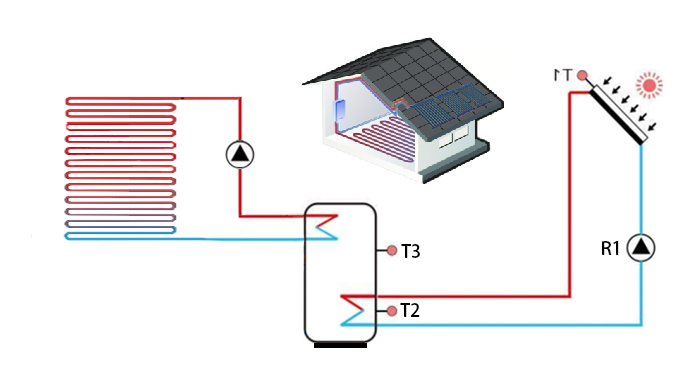
Benefits of Solar Radiant Floor Heating
The average family spends over $2000 a year in heating costs. Heating systems that rely on fossil fuels, such as oil, propane, and natural gas will continue to rise in cost.
By using a solar home heating system, you can take advantage of the sun’s free, abundant energy to heat your home for free. Heating your home with a solar heating system can significantly reduce your winter fuel bills. Another excellent benefit is that it also heats domestic hot water over year
A solar home heating system will also reduce the amount of air pollution and greenhouse gases that result from your use of fossil fuels such as oil, propane, and other petroleum products.
Selecting and Sizing a Solar Heating System
Selecting the appropriate solar energy system depends on factors such as the site, design, and heating needs of your house.
The local climate, the type and efficiency of the collector(s), and the collector area determine how much heat a solar heating system can provide. It is usually most economical to design system to provide 40% of the home’s heating needs. A well-designed and insulated home that incorporates passive solar heating techniques will require a smaller and less costly heating system of any type, and may need very little supplemental heat other than solar.
Besides the fact that designing an system to supply enough heat 100% of the time is generally not practical or cost-effective, most buildings require a back-up heating system. Supplementary or back-up systems supply heat when the solar system cannot meet heating requirements. Backups can range from a wood stove to a conventional central heating system.

Applications— Solar Heating with Radiant Floors
Solar floor heating systems can be applied to a number of different home heating systems, and are an effective way to significantly reduce your monthly energy costs.
Because a radiant floor uses low to medium temperature water to heat a space directly, it is one of the simplest and cost effective systems to use in conjunction with a solar space heating system.
Most radiant floor systems use water ranging from 90F to 120F as a heat source, circulating this water through your floors. A solar heating system easily provides water temperatures in excess of 140F, making this an ideal solution.
A solar water heating system can be sized to provide a small supplement to your heating system, lowering your costs by 20% to 30%, or be sized much larger, to cut as much as 50% of your home heating bills. Each system can be scaled to your needs, goals, and budget.
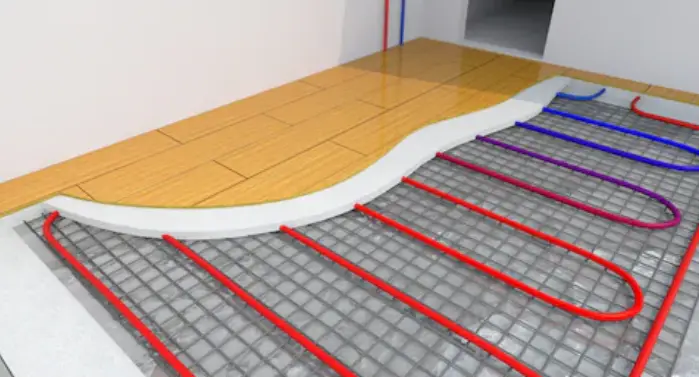
Conclusion
Solar Home Heating has shown the largest growth in the solar thermal market primarily due to the extreme high efficiencies and higher operating temperatures that are possible with vacuum tubes. Solar Evacuated Tubes perform in low light conditions and temperatures reaching minus 35 degree. Solar Home Heating is popular in Northern USA, Canada and Europe. By integrating solar thermal with an existing heating system such as radiator, in floor heat or forced air heat, a home owner can expect to save up to 50% of their heating bill. Because home heat consumes a great portion of your energy bill, it’s payback can be under 5 years.
ANY PENDING QUERIES, PLEASE FEEL FREE TO CONTACT US:
Mobile: +86 180 0660 1051
Inquiry E-Mail: info@riwatt.com
Web:www.riwatt.com
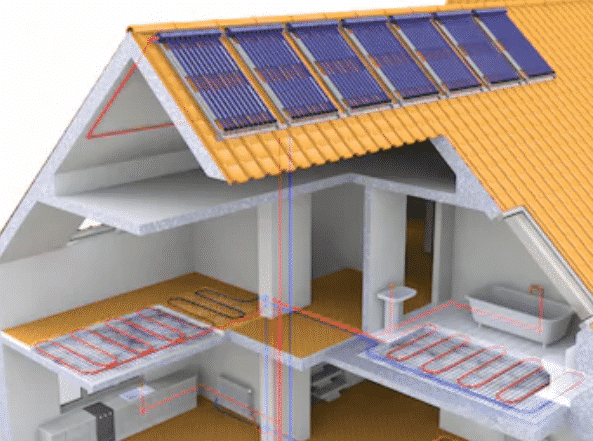

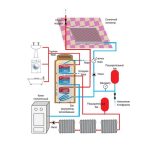
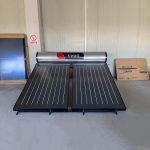
Leave A Comment
Your email address will not be published.